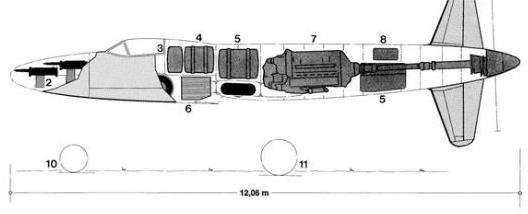
| Type | Single seat fighter bomber |
| Engine | 1 Junkers Jumo 213J, MW 50 with a 3,2 m dia. propeller |
| Dimensions | Length 12,06 m , height , span 12 m , wing area , |
| Weights | Empty , loaded , max. take off weight |
| Performance | Max.. speed 835 km/h , cruising speed , range , endurance , service ceiling , climb |
| Armament | 3 30 mm MK 108 |


